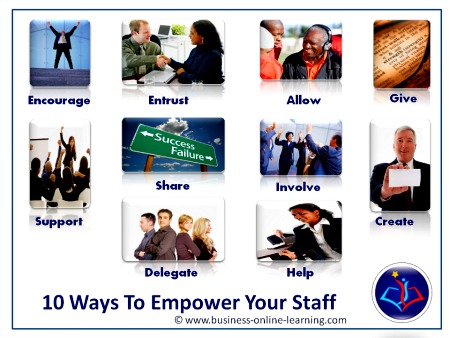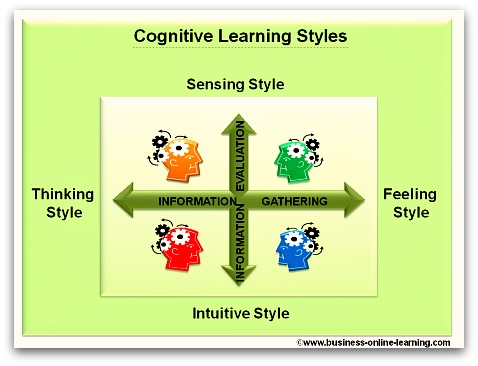10 Successful Ways In Empowering Staff
Empowering Staff is probably one of the greatest ways to leverage the resources we have. By making our staff stronger, we make our business stronger. But it is difficult.
We all like to be in the managing role and most of us are not brought up with the idea that managers should "empower" their staff.
In recognition of the difficulties there may be, I have researched and found these 10 ways to make your staff stronger. Try them out (and let us know how you get on).
Ten Steps to Empowering Staff
- Delegate more: Do you ever remember a time when someone entrusted you with a difficult task and you managed it? This is the feeling you want to create in your staff. Have you a clear picture of the skills and capabilities of your staff? Try making such a list. Then assess the risk of the task at hand (i.e. what could possibly go wrong) and delegate accordingly. Give people more than one chance. By delegating you are also lightening your own load and making the jobs of your staff more enjoyable. This is your first step to empowering your staff.
- Involve your staff in developing their own objectives or goals. Make sure they understand the standards to which they should perform – and also how they can measure their own performance and progress. For Example: If you have staff doing optical inspections, give them the means to test themselves. Let them check themselves how their repeat results are. By this we mean how often they receive the same results or come to the same conclusions.
- Give your staff and the teams they are in, more leeway to decide on how they plan, act and check their own performance. Facilitate the staff and the teams by guiding them. Ask about their goals, guide the strategy (Plan of Action) that they are choosing, question the team members and get feedback as to progress.
- Involve the staff in determining solutions to problems. Face your staff with problems and ask them how they would solve them. Give them feedback to their ideas. Have an open door to suggestions.
- Create autonomous teams. These are teams that can set their own goals and performance standards. They will be allowed to manage their own performance.
- Give your staff a voice in deciding what needs to be done. This can be difficult as it can easily be interpreted as a loss of authority. Therefore it can only be done realistically if the culture will allow it.
- Help people to recognise and learn from their own mistakes. Introduce the concept of stopping up and reflecting on the events. What is also very beneficial is to ask – where else could we apply this lesson we have learned.
- Encourage and support the continuous development of your staff. This way people will grow into their roles and responsibilities as well as expanding far beyond them, ready to take on new responsibilities.
- Share your vision and your ideas with your staff. Keep a golden thread in all that you say and do. This makes your vision and your ideas credible and reliable, making it easier for your staff to follow you – and support you.
- Entrust people and treat them as the adults they are.
My Book Recommendation
One of the most exceptional books I have ever read (that goes beyond the idea of empowering staff) was:
“The Maverick” by Ricardo Semler.
After taking over his father’s business in Brazil, he immediately set about applying all the techniques he has learned in the world’s best business schools. It took some time but he came to the realization that many of these concepts had little to do with his staff.
He applied the guidelines i have listed above - and more - and succeeded in turning his company around in such a skillful way that his business survived many recessions and monetary realignments.
He formed autonomous groups who decided what they needed to do, how they needed to do it and how they were going to achieve their goals. Best of all, they decided themselves how much they were entitled to earn for what they did.
He carried out some almost management-sacrilegious acts such as disbanding all vertical functions such as Quality Assurance, Human Resources, Purchasing, IT, etc. and the teams took on the responsibilities for these aspects within their groups. And it all worked amazingly well as I mentioned.
In my opinion, this is a must-read for any manager who is interested in empowering staff but more so, for those interested in concepts that break away from typical top-down management approaches.
















 My name is Martha and I have worked for over 30 years in various aspects of business and in various countries, right around the world.
My name is Martha and I have worked for over 30 years in various aspects of business and in various countries, right around the world.